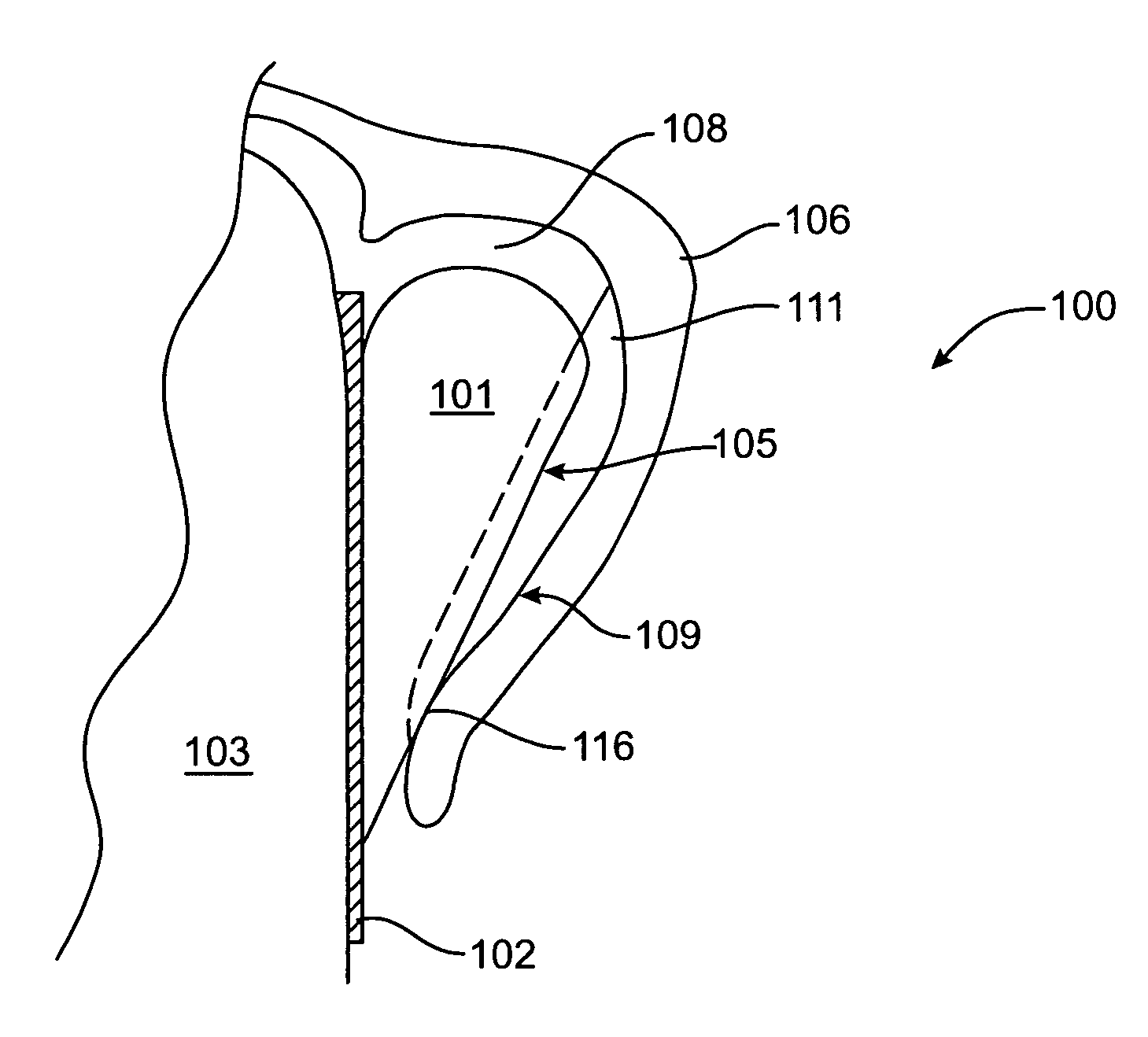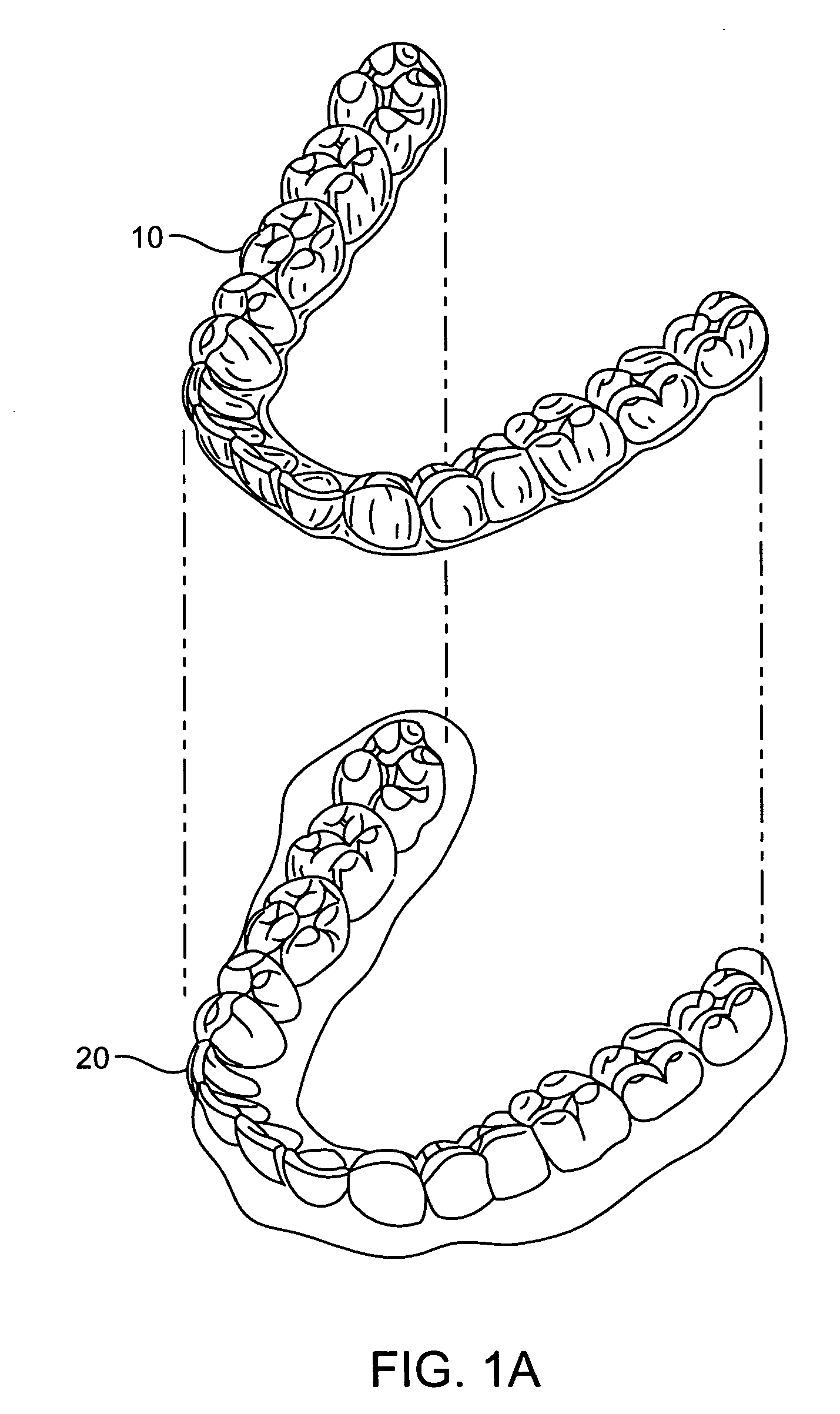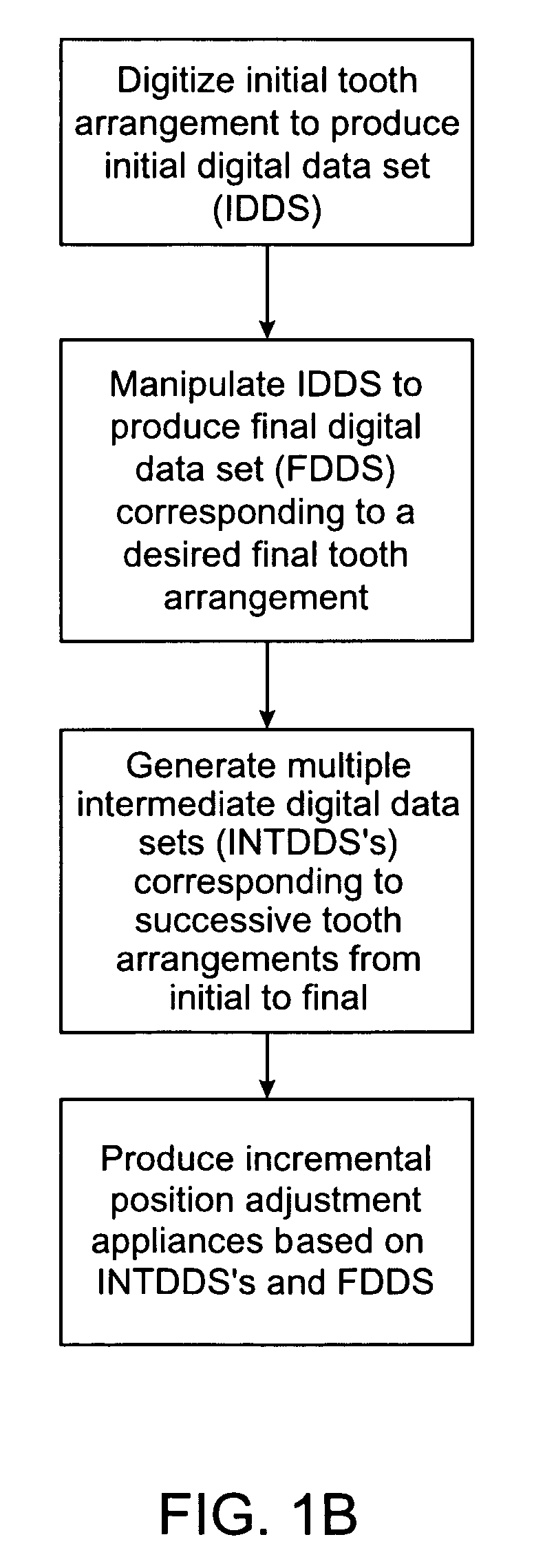Systems and methods for improved engagement between aligners and teeth
a technology of aligner and teeth, applied in the field of orthodontics, can solve the problems of unsightly and uncomfortable, difficult brushing, flossing between teeth and other dental hygiene procedures, and time-consuming process, and achieve the effects of enhancing the surface detail of the virtual attachment, increasing the force transmitted by the polymeric shell, and enhancing the surface detail
- Summary
- Abstract
- Description
- Claims
- Application Information
AI Technical Summary
Benefits of technology
Problems solved by technology
Method used
Image
Examples
Embodiment Construction
[0056]The present invention provides improved systems and methods for moving teeth by positioning appliances over teeth. Appliances are often referred to as aligners. An appliance 10 and set of teeth 20 are illustrated in FIG. 1A. Specific systems and methods for producing the appliances are described in U.S. Pat. No. 5,975,893, the full disclosure of which is incorporated herein by reference. The teeth are bonded to attachment devices to effect rotation, translation, intrusion and extrusion of the teeth. Attachment devices and appliances for incorporating the present invention are described in U.S. Pat No. 6,309,215, the full disclosure of which is incorporated herein by reference. A series of appliances are positioned over the teeth and attachments to reposition teeth from an initial position to a final position. Interactions of the attachment devices and appliances include cam and follower, meshing gear, and ratchet and pawl type interactions. The interactions of the present inve...
PUM
| Property | Measurement | Unit |
|---|---|---|
| distance | aaaaa | aaaaa |
| distance | aaaaa | aaaaa |
| distance | aaaaa | aaaaa |
Abstract
Description
Claims
Application Information
 Login to View More
Login to View More - R&D
- Intellectual Property
- Life Sciences
- Materials
- Tech Scout
- Unparalleled Data Quality
- Higher Quality Content
- 60% Fewer Hallucinations
Browse by: Latest US Patents, China's latest patents, Technical Efficacy Thesaurus, Application Domain, Technology Topic, Popular Technical Reports.
© 2025 PatSnap. All rights reserved.Legal|Privacy policy|Modern Slavery Act Transparency Statement|Sitemap|About US| Contact US: help@patsnap.com



